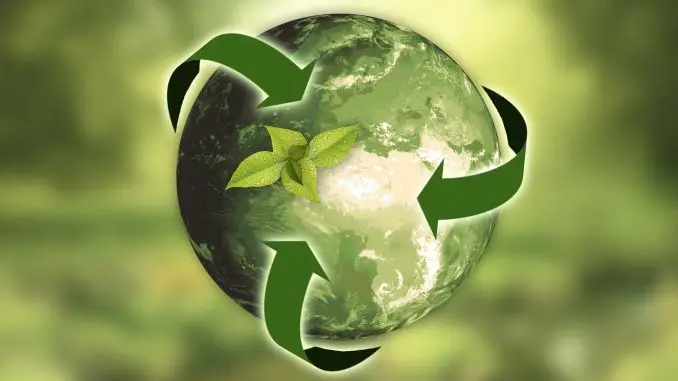
Circular economy – instead of the throwing community
A transition to a circular economy is essential if we are to succeed in the global goal of reducing consumption. With an ever-increasing and more buoyant world population, there is enormous pressure on our shared resources. Our old way of producing, consuming, using and throwing things simply no longer works.
The transition to a circular economy is absolutely necessary to save the climate and reduce the over-utilization of the earth’s resources such as forest, metals and oil. But even though there is a lot of talk about the need for a circular economy, many people do not really understand what it means. Therefore, we have answered some of the most common questions.
What is a circular economy?
Simply put, it can be said that a circular economy is the opposite of the traditional linear economy we have today. Instead of manufacturing, buying, using and then throwing things away, in a circular economy, you use everything that you have produced as long as possible. And when things are consumed, as much as possible is recycled and recycled as much as possible – all to save less on earth’s resources and reduce our waste. A modern word for the cycle simply.
How do we switch to a circular economy?
To change to a circular economy, we need to change how we consume and how we recover. We need:
1. Reduce the consumption of new things.
2. Reuse more.
3. Design products and packaging smarter.
4. Recycle more material.
5. Utilize the energy in what is not recyclable and must, therefore, be incinerated.
Who advocates a circular economy today?
As good as everyone. Both the EU and the UN have an increased circular economy among their goals. But the thinking goes beyond how the circular economy should be designed.
What are the barriers to switching to a circular economy?
Since so many are striving for a more circular economy, there are no direct obstacles, other than corporate habits. But there are a lot of difficulties that need to be addressed.
Among other things, it is nowadays difficult to use recycled material, because you do not know exactly what it contains. Many products we use today are composed of a variety of materials and additives. This means that hazardous chemicals run the risk of being recycled with the materials.
Therefore, there must be easily accessible information about which chemicals different materials and goods contain, that is content lists, on everything that is produced. The information must follow from the manufacturer, the seller and the consumer until the material is reused or recycled.
Today, consumers only have the right to know if what they are buying contains substances that are included in the EU list of particularly dangerous substances and that does not apply to all types of goods. Nor does this information follow when the product is to be recycled.
In addition, EU legislation needs to be amended. Today, higher levels of hazardous substances are allowed in recycled materials than in new ones. This means that people and the environment are at risk of being exposed to more dangerous substances when we move towards a circular economy.
What would happen to the economy if no new things were manufactured? That’s what drives growth.
In a circular economy, new things can definitely be made. But in order not to waste on the earth’s resources, the products must be made of materials already in circulation. Doing new things of old is something that both people and nature gain. Some new production will always exist, as materials cannot be recycled/reused as many times without losing quality. Jobs that disappear from new production can be recreated in the recycling or reuse industries.
But plastic is so cheap to make – is it really realistic to stop making new plastic and just reuse and recycle the old one?
It is true that plastics are too cheap to re-produce for companies to want to switch to recycled plastics. This is one of the problems with plastic, as it causes more and more plastic to burn up and contribute to climate change or end up in the wild where it risks harming animals.
In addition, much plastic is produced from oil and natural gas and we must reduce dependence on fossil raw material sources. Here we have a responsibility to consumers. We need to press and show that we want a circular economy where plastic is recycled.
The Nature Conservation Association primarily wants politicians to set up frameworks (ie laws and regulations) so that a circular economy is favored. This involves, among other things, the producers having to take greater responsibility for collecting and recycling the material in their products. Politicians must also facilitate alternative ways of owning, such as carpools and the opportunity to rent gadgets instead of buying them – simply sharing the assets.
Isn’t it good to phase out old plastic with dangerous chemicals? Should all plastic really be reused/recycled?
Plastics containing dangerous chemicals need to be phased out and destroyed safely. This applies to all materials that contain dangerous substances and cannot be recycled or reused. Efforts to find non-hazardous plastic chemicals must increase as we move towards a circular economy. This in itself can create new job opportunities in innovation.
Leave a Reply